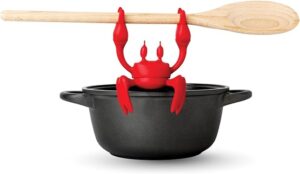The contemporary marketplace presents numerous decorative anomalies, yet this particular amphibian sculpture transcends mere novelty through its confrontational aesthetic posturing. Its bulbous form, simultaneously evoking botanical and zoological taxonomies, occupies an intriguing intersection of camp sensibility and material culture critique. The piece’s deliberately grotesque physiognomy suggests deeper interrogations of domesticity and ornamental convention. One must examine whether such objects merely capitalize on ironic consumption or genuinely subvert decorative hierarchies through calculated absurdism.
Why This Angry Avocado-Looking Amphibian Caught My Eye
When one encounters an objet d’art that simultaneously evokes the physiognomy of an disgruntled amphibian and the distinctive silhouette of Persea americana, the contemporary consumer finds themselves confronted with a peculiar manifestation of postmodern kitsch that demands intellectual scrutiny. The resin construction raises questions regarding material sustainability within decorative commodity production.
This anthropomorphized anuran’s cultural representation transcends mere ornamental function, embodying contemporary society’s fascination with ironic domesticity. The hand-painted varnish coating suggests artisanal craftsmanship while acknowledging mass-production realities. Such paradoxical objects occupy liminal spaces between high art pretension and lowbrow humor, challenging traditional aesthetic hierarchies through deliberate absurdity.
Build Quality and Design Details That Matter
Invariably, discerning collectors of contemporary decorative grotesquerie must evaluate the structural integrity and aesthetic minutiae that distinguish superior specimens from inferior imitations. This particular specimen’s material composition employs high-grade resin, providing substantial heft at 4.2 ounces despite compact dimensions measuring 3.74 by 2.6 by 3.1 inches.
The paint application demonstrates meticulous hand-craftsmanship, with each scowling feature receiving individual attention before protective varnish coating guarantees longevity. Such manufacturing precision elevates this amphibian artifact beyond mere novelty status, transforming it into a legitimate objet d’art worthy of sophisticated interior environments, from minimalist offices to eclectic residential galleries.
Where to Display Your Grumpy Garden Guardian
Strategic placement of this cantankerous amphibian sculpture demands careful consideration of both environmental context and visual impact within one’s curated spatial narrative. The grumpy toad transcends conventional garden ornament paradigms through its versatile dimensional specifications.
Unconventional placement ideas include:
- Bibliophilic sanctuaries between leather-bound volumes
- Corporate conference tables as subversive décor
- Bathroom windowsills confronting morning routines
Each location transforms the piece into an intriguing conversation starter, disrupting anticipated aesthetic harmonies. The statue’s compact 3.74-inch length permits discrete positioning within interior vignettes, while its weather-resistant resin construction accommodates outdoor installations, establishing dialogues between domesticated spaces and the sculpture’s implied wild origins.
Conclusion
The specimen ultimately transcends its ostensible categorization as mere decorative ephemera, asserting itself as a legitimate articulation of contemporary sculptural discourse. Its synthesis of amphibian morphology with Persea americana aesthetics constitutes a sophisticated commentary on material culture’s inherent contradictions. The artifact’s paradoxical positioning—simultaneously embracing and subverting kitsch sensibilities—renders it an exemplary manifestation of postmodern irony. One must acknowledge its successful negotiation between accessibility and conceptual rigor, establishing precedent for future explorations in domesticated absurdism.





